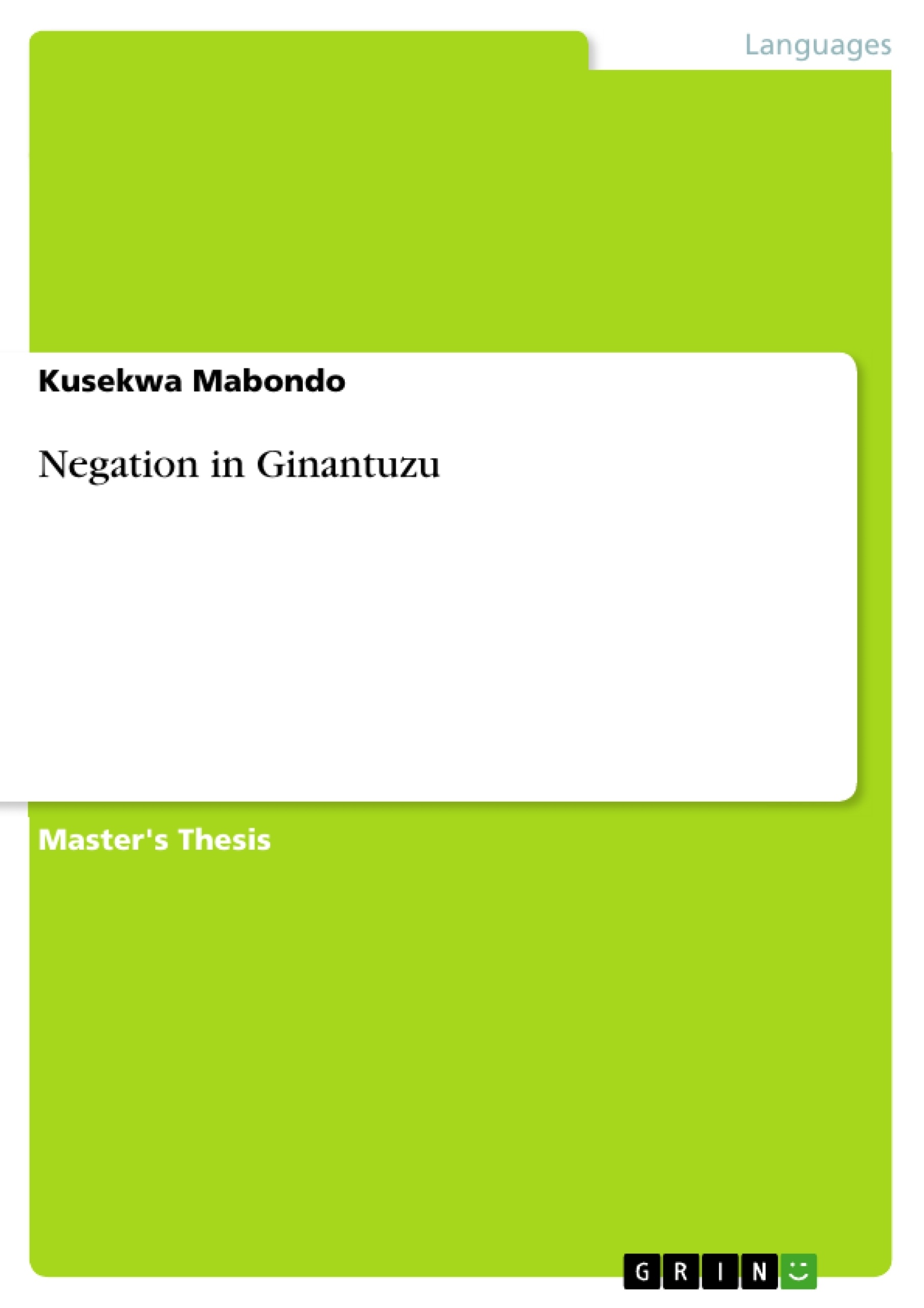This study was devoted to a description of the ways for expressing negation, distribution of negation markers and the scope of these negation markers in a sentence with particular reference to GinaNtuzu spoken in the lake zone region in Tanzania. The study was guided by Structure Dependency Principle.
The research design used for this research was descriptive in nature as it included a survey of the language and fact finding about negation in the language. The data analysis methods and procedures in this study was fragmentation.
It was revealed that GinaNtuzu expresses negation in five ways, namely, a prefix –da- , a copula negative morpheme –di which is always inflected with a subject marker for concordial agreement, negative particles nduhu, biya, and kija. In identifying the distribution of each negative morpheme, it was revealed that the occurrence of each negative morpheme depends on the structure of the affirmative sentence and that the change of the tense/mood triggers changes of the negative morpheme in a given sentence. In describing the scope of negation, two types/scopes of negation have traditionally been distinguished; these have been labelled, sentential and constituent, that is, if the effect of negation marker is on the entire clause, which is considered to be a sentencial negation. When the effect of the negation marker is on a portion of the clause, it is a constituent negation.
Inhaltsverzeichnis (Table of Contents)
- CHAPTER ONE: INTRODUCTION
- 1.0 Introduction
- 1.1 Background to the Problem
- 1.2 Statement of the Problem
- 1.3 Objectives of the Study
- 1.4 Research Questions
- 1.5 Significance of the Study
- 1.6 Theoretical Framework
- 1.7 Scope of the Study
- 1.8 Organization of the Study
- 1.9 Conclusion
- CHAPTER TWO: INTRODUCTION
- 2.0 Introduction
- 2.1 The Concept of Negation
- 2.2 The Morphological Interaction of the Grammatical Categories
- 2.3 Ways of Expressing Negation and the Distribution of Negation Markers
- 2.3.1 Negation in Tensed Clauses
- 2.3.2 Negation in Aspectual Clauses
- 2.3.3 Negation in Moody Clauses
- 2.3.4 Negation in Other Constructions
- 2.4 The Distribution of Negation Markers in a Clause across Clause Type
- 2.4.1 Scope of Negation
- 2.4.1.1 Sentencial Negation
- 2.4.1.2 Constituent Negation
- The various ways of expressing negation in GinaNtuzu
- The distribution of negation markers across different sentence structures and clause types
- The scope of negation in GinaNtuzu, distinguishing between sentential and constituent negation
- The morphological interaction of grammatical categories in the formation of negation
- The impact of tense/mood variations on the choice of negation markers
Zielsetzung und Themenschwerpunkte (Objectives and Key Themes)
This dissertation examines the expression of negation in the GinaNtuzu language, spoken in the Lake Zone region of Tanzania. The research aims to provide a comprehensive description of the different ways in which negation is expressed, the distribution of negation markers, and the scope of these markers within sentences. The study is guided by the Structure Dependency Principle.
Zusammenfassung der Kapitel (Chapter Summaries)
Chapter One provides an introduction to the research, outlining the background, problem statement, objectives, research questions, significance, theoretical framework, scope, and organization of the study. It establishes the context for the investigation of negation in GinaNtuzu.
Chapter Two delves into the concept of negation, exploring the morphological interaction of grammatical categories and various ways of expressing negation. It analyzes the distribution of negation markers across different clause types, including tensed, aspectual, and moody clauses, as well as other constructions. This chapter further examines the scope of negation in GinaNtuzu, differentiating between sentential and constituent negation.
Schlüsselwörter (Keywords)
The key terms and concepts explored in this dissertation include negation, GinaNtuzu, Bantu languages, morphology, syntax, sentential negation, constituent negation, Structure Dependency Principle, grammatical categories, tense, mood, aspect, and clause types.
- Citar trabajo
- Kusekwa Mabondo (Autor), 2012, Negation in Ginantuzu, Múnich, GRIN Verlag, https://www.grin.com/document/377363



